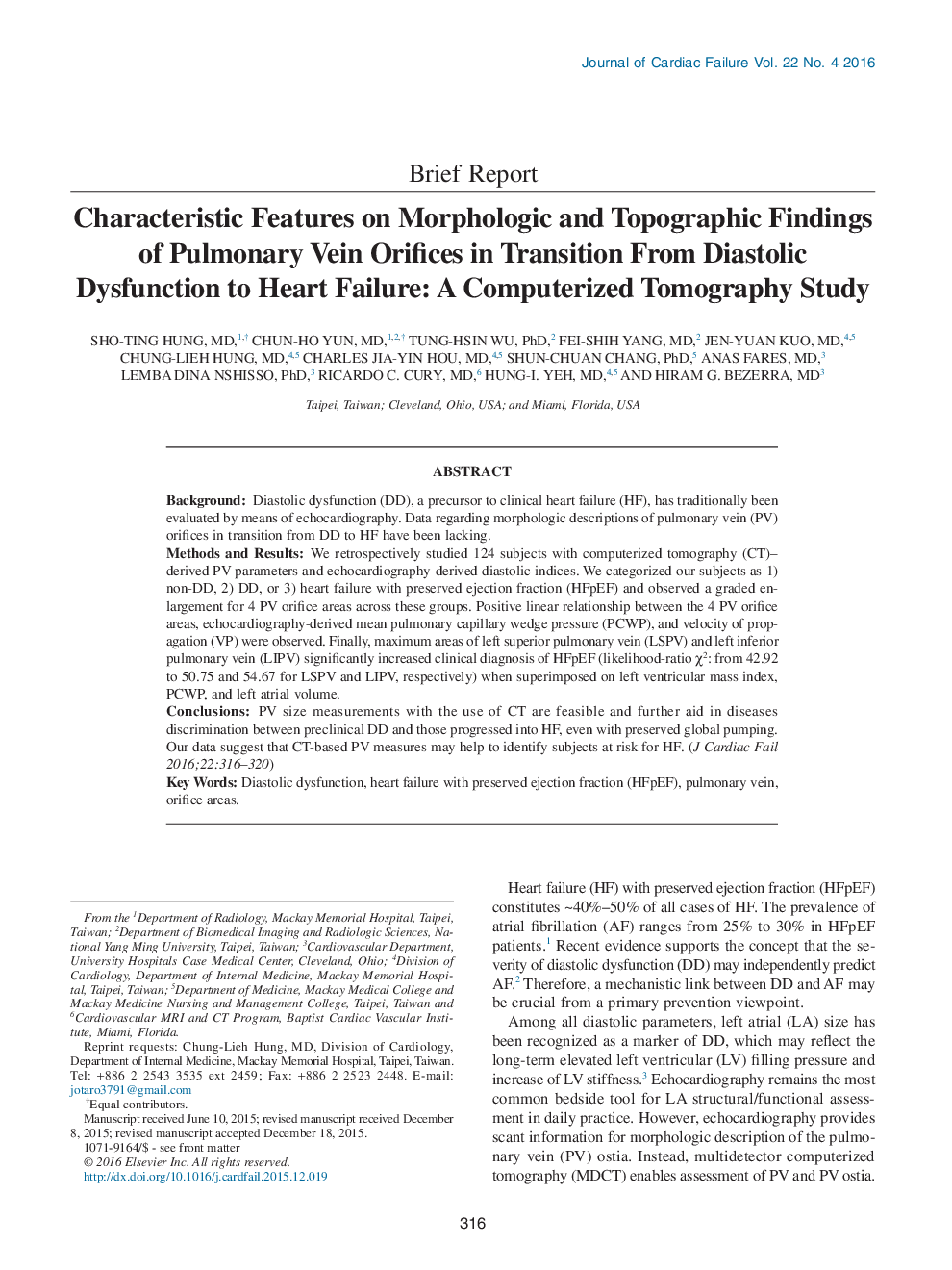| Article ID | Journal | Published Year | Pages | File Type |
|---|---|---|---|---|
| 2958583 | Journal of Cardiac Failure | 2016 | 5 Pages |
•Morphologic descriptions of PVs in transition from DD to HF have been lacking.•We observed a graded enlargement of PV orifice areas from DD to HF.•Maximum LSPV and LIPV areas significantly increased clinical diagnosis of HFpEF.•CT-based PV measurements may help to identify subjects at risk for HF.
BackgroundDiastolic dysfunction (DD), a precursor to clinical heart failure (HF), has traditionally been evaluated by means of echocardiography. Data regarding morphologic descriptions of pulmonary vein (PV) orifices in transition from DD to HF have been lacking.Methods and ResultsWe retrospectively studied 124 subjects with computerized tomography (CT)–derived PV parameters and echocardiography-derived diastolic indices. We categorized our subjects as 1) non-DD, 2) DD, or 3) heart failure with preserved ejection fraction (HFpEF) and observed a graded enlargement for 4 PV orifice areas across these groups. Positive linear relationship between the 4 PV orifice areas, echocardiography-derived mean pulmonary capillary wedge pressure (PCWP), and velocity of propagation (VP) were observed. Finally, maximum areas of left superior pulmonary vein (LSPV) and left inferior pulmonary vein (LIPV) significantly increased clinical diagnosis of HFpEF (likelihood-ratio χ2: from 42.92 to 50.75 and 54.67 for LSPV and LIPV, respectively) when superimposed on left ventricular mass index, PCWP, and left atrial volume.ConclusionsPV size measurements with the use of CT are feasible and further aid in diseases discrimination between preclinical DD and those progressed into HF, even with preserved global pumping. Our data suggest that CT-based PV measures may help to identify subjects at risk for HF.
